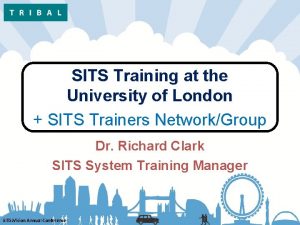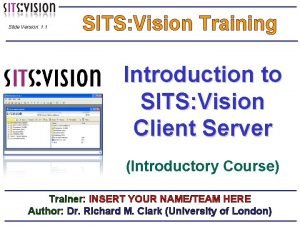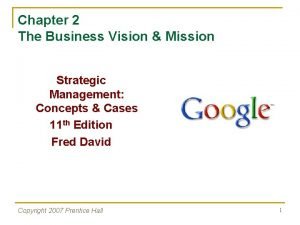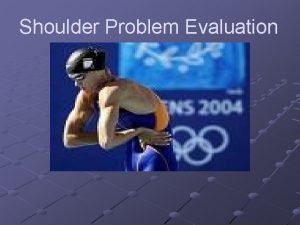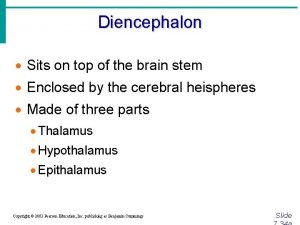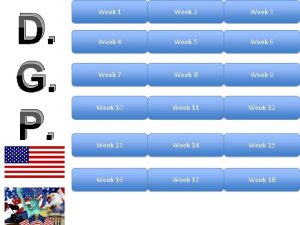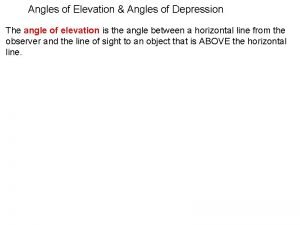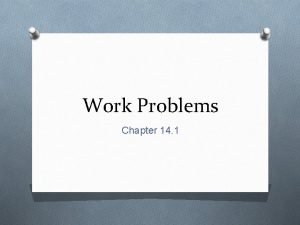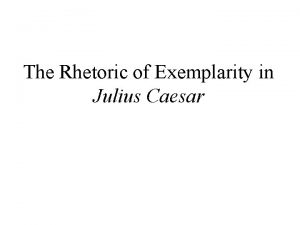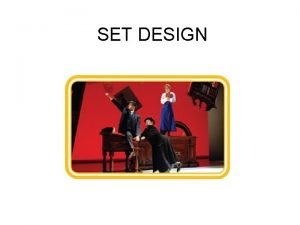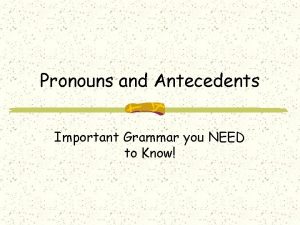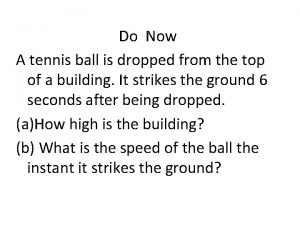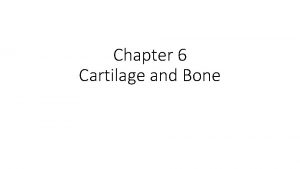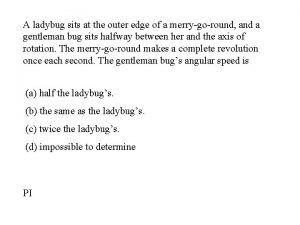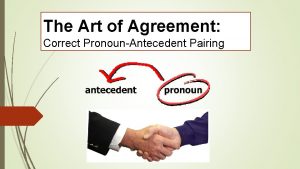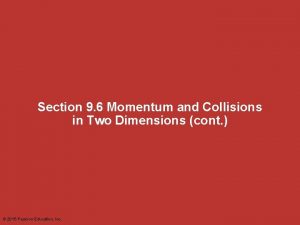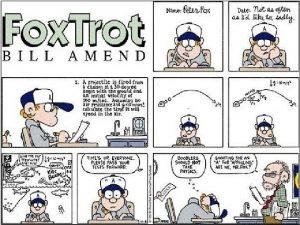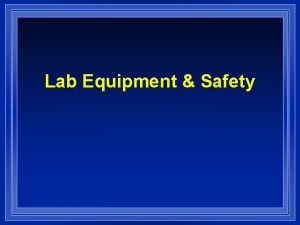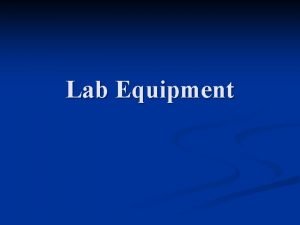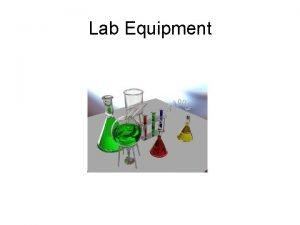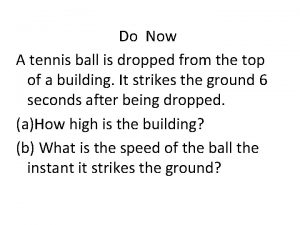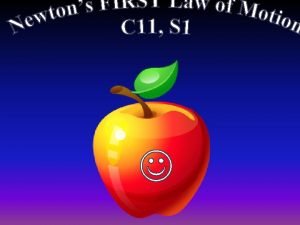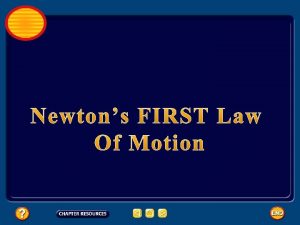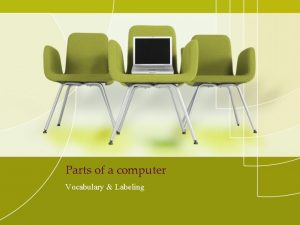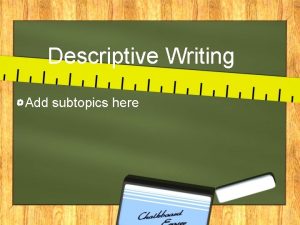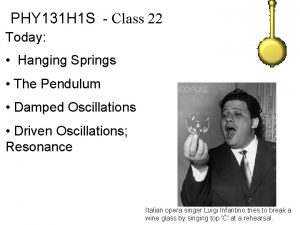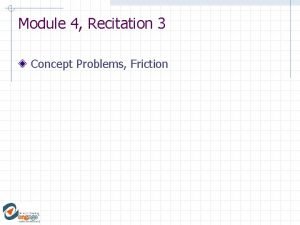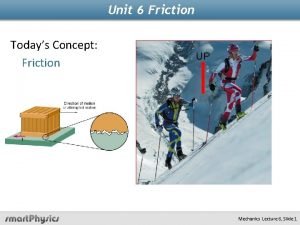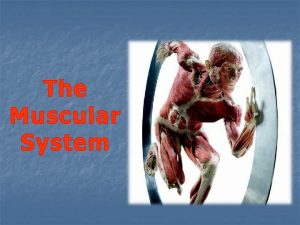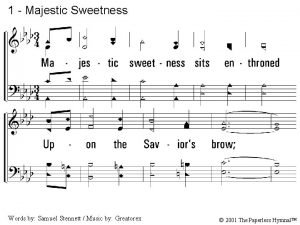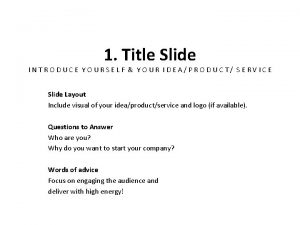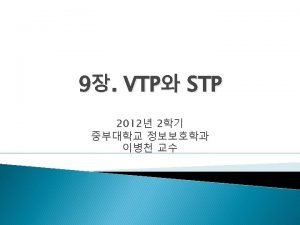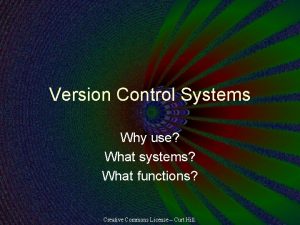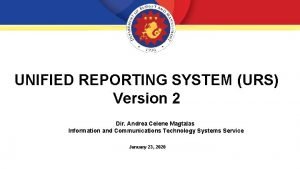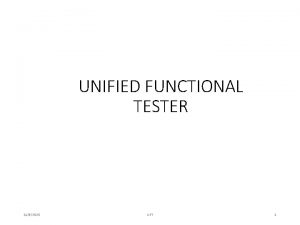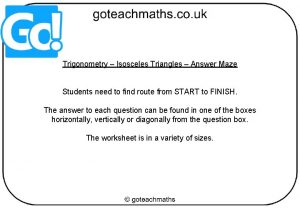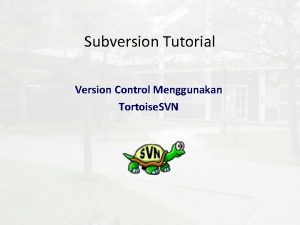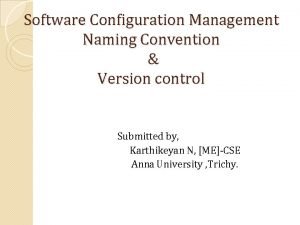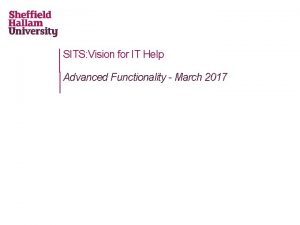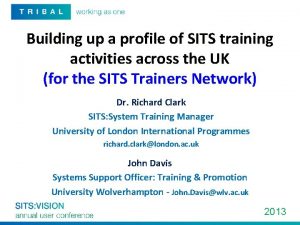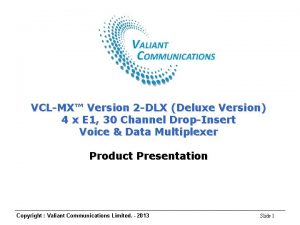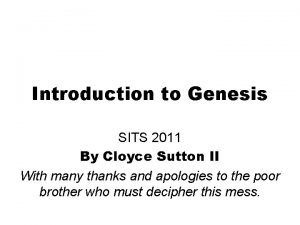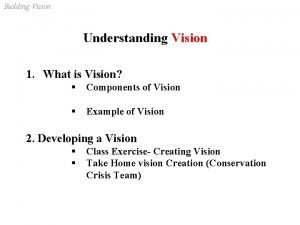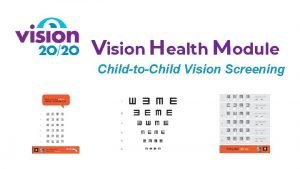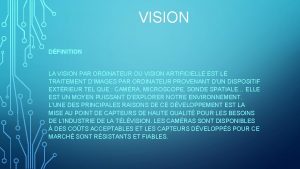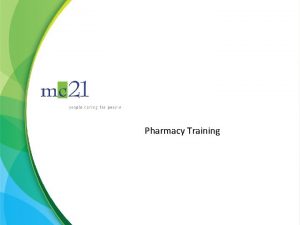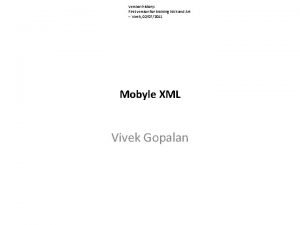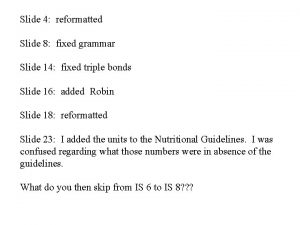Slide Version 1 1 SITS Vision Training Introduction

![Training Room [ Insert Map of your own training room here ] Training Room [ Insert Map of your own training room here ]](https://slidetodoc.com/presentation_image_h/b2e501e5bd8fb8440ae9beb0e2748d3e/image-2.jpg)

















![Exercise 1 A [ Interactive ] Load SITS: Vision client server, log into the Exercise 1 A [ Interactive ] Load SITS: Vision client server, log into the](https://slidetodoc.com/presentation_image_h/b2e501e5bd8fb8440ae9beb0e2748d3e/image-20.jpg)







![Exercise 2 A [ Interactive ] Exploring menus, panel buttons and navigation techniques (Pages Exercise 2 A [ Interactive ] Exploring menus, panel buttons and navigation techniques (Pages](https://slidetodoc.com/presentation_image_h/b2e501e5bd8fb8440ae9beb0e2748d3e/image-28.jpg)






![Exercise 2 B [ Interactive ] Exploring a range of menu and keyboard shortcut Exercise 2 B [ Interactive ] Exploring a range of menu and keyboard shortcut](https://slidetodoc.com/presentation_image_h/b2e501e5bd8fb8440ae9beb0e2748d3e/image-35.jpg)






![Exercise 3 A [ Interactive ] Apply a range of wildcards to retrieve records Exercise 3 A [ Interactive ] Apply a range of wildcards to retrieve records](https://slidetodoc.com/presentation_image_h/b2e501e5bd8fb8440ae9beb0e2748d3e/image-42.jpg)



![Exercise 3 B [ Interactive ] Add, Delete and Release Records (Pages 34 -35). Exercise 3 B [ Interactive ] Add, Delete and Release Records (Pages 34 -35).](https://slidetodoc.com/presentation_image_h/b2e501e5bd8fb8440ae9beb0e2748d3e/image-46.jpg)







![Exercise 4 A [ Interactive ] Special characters, Go. To field contents tool, sorting/dropping Exercise 4 A [ Interactive ] Special characters, Go. To field contents tool, sorting/dropping](https://slidetodoc.com/presentation_image_h/b2e501e5bd8fb8440ae9beb0e2748d3e/image-54.jpg)











![Exercise 4 B [ Interactive ] Explore the quick analysis and cross referencing analysis Exercise 4 B [ Interactive ] Explore the quick analysis and cross referencing analysis](https://slidetodoc.com/presentation_image_h/b2e501e5bd8fb8440ae9beb0e2748d3e/image-66.jpg)


- Slides: 68

Slide Version: 1. 1 SITS: Vision Training Introduction to SITS: Vision Client Server (Introductory Course) Trainer: INSERT YOUR NAME/TEAM HERE Author: Dr. Richard M. Clark (University of London)
![Training Room Insert Map of your own training room here Training Room [ Insert Map of your own training room here ]](https://slidetodoc.com/presentation_image_h/b2e501e5bd8fb8440ae9beb0e2748d3e/image-2.jpg)
Training Room [ Insert Map of your own training room here ]

Target Audience / Level No previous knowledge or experience in the use of SITS: Vision is required. Participants should have knowledge of using a computer and basic concepts of using a Windows environment. Introductory / preparatory topics will be introduced (this course also provides the foundation for all other SITS: Vision courses).

Topics Covered Introduction to SITS: Vision, Differences between SITS: Vision client server & e: Vision. Examples of client server and e: Vision screens. Logging into/out of SITS: Vision client server. Windows tree style menus and panel buttons, SITS: Vision screens, navigation (commands, shortcuts, menus). Retrieving records, record navigation, wildcards & Boolean operators, adding/deleting/releasing records Inserting special characters. Go. To field contents Sorting & dropping records Quick analysis & exporting data Cross referencing analysis & exporting data

Presentation Course material (booklet/notes). Interactive exercises. Slides / presentation of information.

Course Participant Introductions Please introduce yourself (i. e. Name, department etc). Have you ever used SITS before? Is there anything in particular that you are looking for from the course?

Section 1: Introduction to SITS: Vision • Introduction to the SITS: Vision system • Differences between SITS: Vision client server & e: Vision • Examples of client server and e: Vision screens. • Loading SITS: Vision • Logging into SITS: Vision • Closing and logging out of SITS: Vision

What is SITS: Vision? SITS: Vision (also known as SITS), is a management information system used by many Higher Education institutions across the UK. The name ‘SITS’ was originally derived from ‘Strategic Information Technology Services’ who joined Tribal Group plc in October 2004. SITS: Vision supports the administration of students and courses within universities and colleges. It is designed to increase efficiency in administrative processes. SITS: Vision provides a powerful and reliable database as well as flexible and efficient software to manage the unique needs of higher education.

SITS: Vision & e: Vision SITS: Vision client server provides a ‘back end’ to the system and is useful for infrequent tasks. SITS: Vision client server cannot be modified with regards to the appearance of various screens. e: Vision provides secure portal access via the web and is used to manage the delivery of data and information from the SITS: Vision client server. The e: Vision portal is useful for frequent activities and screens are customised to obtain/present only the information that is required.

SITS: Vision & e: Vision SITS: Vision client server - Out of the box / ‘as is’. - Think of as a ‘back end’. - Useful for infrequent activities. - Tables/screens cannot be modified. e: Vision - Web-based ‘front end’. - Useful for frequent activities. - Tables/screens can be customised and branded.

Client Server Example Screens

Note: Data shown is a fictitious example of an enquirer record.

Note: Data shown is a fictitious example of an enquirer record.

Note: Data shown is a fictitious example of an enquirer record.

E: Vision Example Screens

Note: Data shown is a fictitious example of an enquirer record.

Logging into SITS: Vision

SITS Menu System

Logging out of SITS: Vision Select the close icon to the upper right of the menu screen. File, Exit (or CTRL+Q )
![Exercise 1 A Interactive Load SITS Vision client server log into the Exercise 1 A [ Interactive ] Load SITS: Vision client server, log into the](https://slidetodoc.com/presentation_image_h/b2e501e5bd8fb8440ae9beb0e2748d3e/image-20.jpg)
Exercise 1 A [ Interactive ] Load SITS: Vision client server, log into the system and log out again (Page 14). Refer to pages 6 -13 in your manual for assistance.

Section 2 - Navigation • Windows tree style menus. • Panel buttons. • Navigating using commands. • SITS: Vision screens & controls. • Further navigation and shortcuts: Ø Pull-down menus. Ø Right-click menus. Ø Keyboard shortcuts.

Windows tree style menus & panel buttons Option box Run button

The Search Button The Search button provides access to a Keyword Search window. Enter a word (or words) in the Search for box and choose the Find button. Apply the Run button to run (open) a highlighted option.

Additional buttons… The expand all button will expand every branch of the menu tree and the collapse all button will collapse all branches. The Up button will move the user from a sub-menu back to the previous menu (i. e. the next menu higher in the tree). The Home button will move a user to the top of the menu tree. The History button will display the ‘history’ folder which will show the most recently accessed menu options within the current session.

Favourites The Favourites button will display menu options that the user has added to their ‘favourites’ folder. The star button presents three options depending on the selected menu: A plus icon is displayed if a menu option can be added to “Favourites”. A no-entry sign is displayed if a menu cannot be added to ‘Favourites’. A cross is shown if a menu option can be removed from ‘Favourites’.

View Button List format Icon and text Menu Close Option History / recent options Process My favourite options Report Help User / Person Web Page

Navigation via Commands Enter a menu command press the TAB key, the ENTER key on the number pad or select the Run button.
![Exercise 2 A Interactive Exploring menus panel buttons and navigation techniques Pages Exercise 2 A [ Interactive ] Exploring menus, panel buttons and navigation techniques (Pages](https://slidetodoc.com/presentation_image_h/b2e501e5bd8fb8440ae9beb0e2748d3e/image-28.jpg)
Exercise 2 A [ Interactive ] Exploring menus, panel buttons and navigation techniques (Pages 18 -19). Refer to pages 16 -18 in your manual for assistance.

SITS: Vision Screens SITS: Vision application name Menu bar Panel Program name User, institution & date Component, menu & program Occurrence Boilerplate Text Fields Message line

Windows controls / ‘widgets’ Command buttons Pull-down / drop-down list Spin Boxes Tabs Option/radio buttons Checkboxes

Pull-down menus

Menus and the Panel buttons Access menus via: mouse click, ALT + underlined character or pressing the menu bar key (F 10) + underlined character. Clear, retrieve, store, print, message buffer Cut, copy, paste, clear, zoom, help Add record, first, previous, next, last

Right-click menus and keyboard shortcuts The GOLD key The ALT key + key on number pad or the ESC key

Keyboard Shortcuts Key Action GOLD+key CTRL+key ALT+key F 1 Help F 2 Detail SITS: Vision manuals - F 3 Accept - - F 4 Quit Exit application F 5 Retrieve - - - F 6 Store - Switch window within session - F 7 Clear field - F 8 Previous field - - F 9 Message - F 10 Activate menu - - F 11 Print screen - - F 12 Clear screen Print screen - Keyboard -
![Exercise 2 B Interactive Exploring a range of menu and keyboard shortcut Exercise 2 B [ Interactive ] Exploring a range of menu and keyboard shortcut](https://slidetodoc.com/presentation_image_h/b2e501e5bd8fb8440ae9beb0e2748d3e/image-35.jpg)
Exercise 2 B [ Interactive ] Exploring a range of menu and keyboard shortcut options (Pages 25 -26). Refer to pages 20 -24 in your manual for assistance.

Section 3 – Record operations • Retrieving records. • Wildcards and Boolean operators. • Selection lists and field validation. • Adding records. • Deleting records. • Releasing records.

Retrieving Records (1) Current Occurrence of Total Occurrences • To retrieve a single record: - Use the primary key field(s), which will require a unique code. - Retrieve records using File/Retrieve - or press F 5 - or GOLD + R - or by right-clicking (just outside of the field box) and choosing Retrieve. - when initially entering a screen, “ 1 of 0 <Table Name>” is shown. - indicates that you are on the first occurrence and that no records have been retrieved.

Retrieving Records (2) • To retrieve a multiple records: - In the desired field(s), enter suitable codes. - Retrieve records using File/Retrieve - or press F 5 - or GOLD + R - or by right-clicking (just outside of the field box) and choosing Retrieve. Scroll through the corresponding records using the record navigation buttons or keyboard shortcuts (Page Up, Page Down etc).

Wildcards and Boolean operators

Wildcards & Boolean (examples). * Search for any characters. For example, N. * . ? Can be used if the required records have a field of a specific length. For example, N. ? . ? . ! NOT (for example, . !COMP 1 would retrieve all records that do not use the code COMP 1). . |. ; OR (for example, N. *. | X. * would retrieve records whose code started with N or X). . & AND (for example, C. *. &. !COMP 1 would retrieve records whose code started with C and excluded any codes of ‘COMP 1’). . = Equal to (for example, . =COMP 1 would retrieve all records that match the code COMP 1. Entering. = on its own would retrieve all records where the field value is blank).

Wildcards & Boolean (examples). !. = Not equal to (for example, . !. =COMP 1 would retrieve all records that do not match the code COMP 1). . > Greater than – for example. >C would retrieve all records greater than C (i. e. D, E, F … Z). . >. = Greater than or equal to – for example. >. =C would retrieve all records greater than or equal to C (i. e. C … Z). . < Less than – for example. <C would retrieve all records less than C (i. e. beginning with A or B). . <. = Less than or equal to – for example. <. =C would retrieve all records less than or equal to C (i. e. beginning with A, B or C).
![Exercise 3 A Interactive Apply a range of wildcards to retrieve records Exercise 3 A [ Interactive ] Apply a range of wildcards to retrieve records](https://slidetodoc.com/presentation_image_h/b2e501e5bd8fb8440ae9beb0e2748d3e/image-42.jpg)
Exercise 3 A [ Interactive ] Apply a range of wildcards to retrieve records (Pages 30 -31). Refer to pages 28 -29 in your manual for assistance.

Adding Records A new record must have a unique code. The code for a new record must follow any existing coding convention. Code fields and short name fields will always default to UPPER CASE. The format of the full name field (i. e. the description) can be entered in upper or lower case. Some fields may be mandatory - you will be unable to leave such fields blank.

Deleting Records Retrieve the desired record (File->Retrieve, F 5 etc). With the correct record displayed on the screen, select the File menu and choose Delete. In the Delete Confirmation window, select Yes to confirm the deletion or No to cancel.

Releasing Records If there are many records that you wish to create (perhaps with very similar contents for each record), you can apply the use of the release facility to use a single record as a template. Retrieving the desired record (File->Retrieve, F 5 etc). From the File menu, select Release. Change appropriate values in the record (including the primary key). Press F 6 (or choose the File menu and select Store) to store the new record.
![Exercise 3 B Interactive Add Delete and Release Records Pages 34 35 Exercise 3 B [ Interactive ] Add, Delete and Release Records (Pages 34 -35).](https://slidetodoc.com/presentation_image_h/b2e501e5bd8fb8440ae9beb0e2748d3e/image-46.jpg)
Exercise 3 B [ Interactive ] Add, Delete and Release Records (Pages 34 -35). Refer to pages 32 -33 in your manual for assistance.

Section 4 – Tools & Special Characters • Special characters. • Go. To field contents. • First, previous, next or last records. • Sorting. • Dropping records. • Quick analysis. • Exporting quick analysis data. • Cross referencing analysis. • Exporting Cross referencing analysis data.

Special Characters Created via keyboard characters or the Insert menu. • To enter keyboard characters: - Select the desired field (in a suitable window). - Type any desired characters (for example: if you required the name ANDRÉ, you would start by typing ‘ANDR’). - Press the GOLD key (i. e. + on the number pad or the ESC key). - Press the J key and enter suitable special characters (for example: to complete the name ANDRÉ, you would then type E and ´ - this would result in the text ANDRÉ) Note: the shorthand notation for the above example would be: ANDR <GOLD> J E ´

Special Characters • To enter special characters via the menu:

Go. To Field Contents The Go. To Field Contents window can be used to quickly find a record according to specified search criteria. To apply the Go. To Field Contents window, place the cursor into a suitable field in a record/window. Continued…

Go. To Field Contents In the Search for box, enter suitable text. Select Find Forward or Find Backward. If a corresponding record is found, the record data will be displayed.

Sorting Towards the top of many windows, the number of records will be indicated as records 1 of N. Select the Ok button to apply the sort or select Cancel to abort.

Dropping Records Ø Current record (to drop the currently displayed record only). Ø Range of records (to delete a range of records from x to y) Ø Select by Value to indicate records that may be ‘dropped’ according to specified criteria.
![Exercise 4 A Interactive Special characters Go To field contents tool sortingdropping Exercise 4 A [ Interactive ] Special characters, Go. To field contents tool, sorting/dropping](https://slidetodoc.com/presentation_image_h/b2e501e5bd8fb8440ae9beb0e2748d3e/image-54.jpg)
Exercise 4 A [ Interactive ] Special characters, Go. To field contents tool, sorting/dropping records (Pages 41 -43). Refer to pages 38 -40 in your manual for assistance.

Quick Analysis (1) The Quick Analysis tool allows the user to perform basic mathematical analysis of the values in a field. The basic mathematical analyses that can be performed are: Ø Minimum value in the field. Ø Maximum value in the field. Ø Total value of the fields. Ø Average of the values in the field. Ø Median (middle) value. Ø Mode (most common) value. Ø Standard deviation value. Ø Mode frequency. Ø A list of the values and a count of each type of value.

Quick Analysis (2)

Quick Analysis (3)

Exporting quick analysis data Note: Appendix A outlines further data formats that can be applied.

Cross Reference Analysis (1) A cross reference analysis allows the user to produce a cross tabulation, showing all the values held in two fields. Only available if more than one record is retrieved in the current table. Activated via the Quick Analysis menu command from the Misc menu.

Cross Reference Analysis (2) The F 2 key is used to view/select further details. Select desired field and press F 3 to accept, CTRL+A or choose Accept from the File menu.

Cross Reference Analysis (3)

Quick Analysis Results (Text)

Quick Analysis Results (HTML)

Quick Analysis Results (Chart)

Exporting cross referencing analysis data Note: Appendix A outlines further data formats that can be applied.
![Exercise 4 B Interactive Explore the quick analysis and cross referencing analysis Exercise 4 B [ Interactive ] Explore the quick analysis and cross referencing analysis](https://slidetodoc.com/presentation_image_h/b2e501e5bd8fb8440ae9beb0e2748d3e/image-66.jpg)
Exercise 4 B [ Interactive ] Explore the quick analysis and cross referencing analysis tools (Pages 50 -51). Refer to pages 44 -49 in your manual for assistance.

Summary Introduction to SITS: Vision, Differences between SITS: Vision client server & e: Vision. Examples of client server and e: Vision screens. Logging into/out of SITS: Vision client server. Windows tree style menus and panel buttons, SITS: Vision screens, navigation (commands, shortcuts, menus). Retrieving records, record navigation, wildcards & Boolean operators, adding/deleting/releasing records Inserting special characters. Go. To field contents Sorting & Dropping records Quick analysis & exporting data Cross referencing analysis & exporting data

Feedback ? So, what did you think of today? [ Insert link to survey here ]
 Sits uol
Sits uol Sits vision
Sits vision Heel and toe polka step
Heel and toe polka step Structured light
Structured light Mission in strategic management
Mission in strategic management Factoring problems
Factoring problems Definition of staging
Definition of staging Directions types
Directions types Sits muscle
Sits muscle Horton hatches the egg quotes
Horton hatches the egg quotes Energy bar graph
Energy bar graph Site:slidetodoc.com
Site:slidetodoc.com Dgp week 2
Dgp week 2 Angle of depression
Angle of depression A 600 kg great white shark is lurking
A 600 kg great white shark is lurking O he sits high in people's hearts and that which
O he sits high in people's hearts and that which Both the houses of parliament
Both the houses of parliament Earth sits on pillars
Earth sits on pillars St andrews mms
St andrews mms How to draw a proscenium stage
How to draw a proscenium stage The can of lima beans sits on its shelf
The can of lima beans sits on its shelf University of surrey sits
University of surrey sits Horizontal answer
Horizontal answer Periosteal arteries
Periosteal arteries A ladybug sits at the outer edge of a merry-go-round
A ladybug sits at the outer edge of a merry-go-round Dgp week 8 answers
Dgp week 8 answers A can of lima beans sits on the shelf
A can of lima beans sits on the shelf An 80 kg construction worker sits down
An 80 kg construction worker sits down Example of projectile motion
Example of projectile motion Sits on the iron ring to provide a place to stand a beaker
Sits on the iron ring to provide a place to stand a beaker Pressed fiber pad chemistry
Pressed fiber pad chemistry Cylinder is used for
Cylinder is used for Sits on the iron ring to provide a place to stand a beaker
Sits on the iron ring to provide a place to stand a beaker A child sits upright in a wagon which is moving
A child sits upright in a wagon which is moving A brick sits on a table until you push it
A brick sits on a table until you push it A brick sits on a table until you push on it.
A brick sits on a table until you push on it. Sits group
Sits group A mechanism that spins reads and writes disks
A mechanism that spins reads and writes disks Majestic sweetness
Majestic sweetness Sits on the iron ring to provide a place to stand a beaker
Sits on the iron ring to provide a place to stand a beaker On one corner of my dresser sits a smiling toy clown
On one corner of my dresser sits a smiling toy clown Pauls friend moved here from manteca california
Pauls friend moved here from manteca california The epididymis is a long coiled tube that sits atop the
The epididymis is a long coiled tube that sits atop the Descriptive purpose
Descriptive purpose La belle dame sans merci summary
La belle dame sans merci summary A coin sits on a turntable
A coin sits on a turntable A person swings on a swing when the person sits still
A person swings on a swing when the person sits still A box sits in a pickup truck on a frictionless
A box sits in a pickup truck on a frictionless Conservation of momentum and energy
Conservation of momentum and energy A box sits on the horizontal bed of a moving truck
A box sits on the horizontal bed of a moving truck What is the prime mover of knee flexion
What is the prime mover of knee flexion A coin sits on a turntable
A coin sits on a turntable Who sits on the woolsack
Who sits on the woolsack Majestic sweetness sits enthroned
Majestic sweetness sits enthroned Slide about yourself
Slide about yourself Training is expensive without training it is more expensive
Training is expensive without training it is more expensive Metode of the job training
Metode of the job training Aggression replacement training facilitator training
Aggression replacement training facilitator training National numeracy learning progression
National numeracy learning progression Vlan spanning
Vlan spanning Version control systems industry
Version control systems industry Unified reporting system
Unified reporting system Uft1
Uft1 Trigonometric ratios maze
Trigonometric ratios maze Intents of the heart
Intents of the heart Apostles creed prayer
Apostles creed prayer Svn subversion tutorial
Svn subversion tutorial Risk student version
Risk student version Version control in software configuration management
Version control in software configuration management
